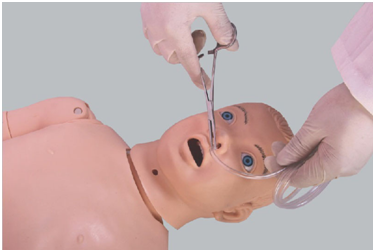The application of pediatric nasogastric tube model in clinical training has significant significance and value. The following is a detailed explanation of its application:
First, improve operational skills
Through the highly simulated design, the pediatric nasal feeding tube model provides an operating platform close to the real clinical environment for medical staff. On this platform, medical staff can repeatedly practice key steps such as the insertion and fixation of nasal feeding tube and the infusion of nasal feeding fluid, so as to master the basic skills of nasal feeding operation. This repeated practice not only helps to improve the operational proficiency of medical staff, but also reduces the risk of complications caused by unskilled skills in actual operation.

Second, enhance safety awareness
In clinical training, the use of pediatric nasal feeding tube model for simulation operation can allow medical staff to personally experience various potential risks in the operation process, such as straying into the airway, nasal mucosa damage, etc. By simulating these risk scenarios, medical personnel can more deeply understand the safety importance of nasal feeding operation, and keep alert in actual operation, and take effective measures to avoid the occurrence of risks.
Third, promote nurse-patient communication
Although the pediatric nasogastric tube model itself cannot directly promote nurse-patient communication, in the process of simulation operation, medical staff need to simulate the communication scene with patients and their families. This kind of simulated communication helps the medical staff to master the communication skills and understand the needs and feelings of the patients, so as to better establish trust and cooperation with the patients and their families in practice.
4. Adapt to special groups
The pediatric nasogastric tube model is especially suitable for the training of pediatric medical staff. Because the physiological characteristics of pediatric patients are significantly different from those of adults, nasal feeding is more difficult and risky in pediatric patients. By using the pediatric nasal feeding tube model for training, pediatric medical staff can be more familiar with the nasal feeding operation process and precautions for pediatric patients, and improve the success rate and safety of the operation.
In summary, the application effect of pediatric nasal feeding tube model in clinical training is significant, which plays an important role in improving the operation skills of medical staff, enhancing safety awareness, promoting nurse-patient communication and adapting to special groups.
